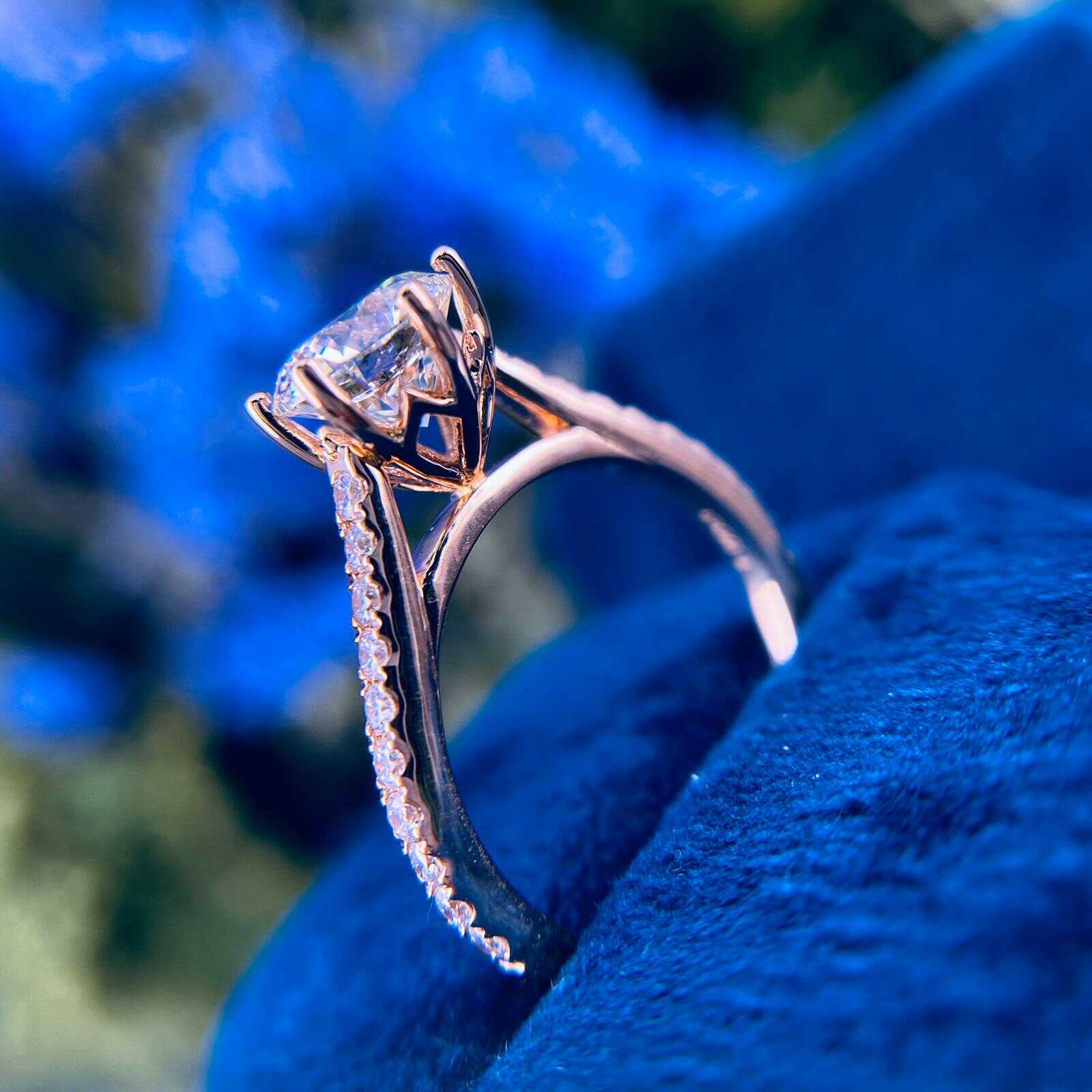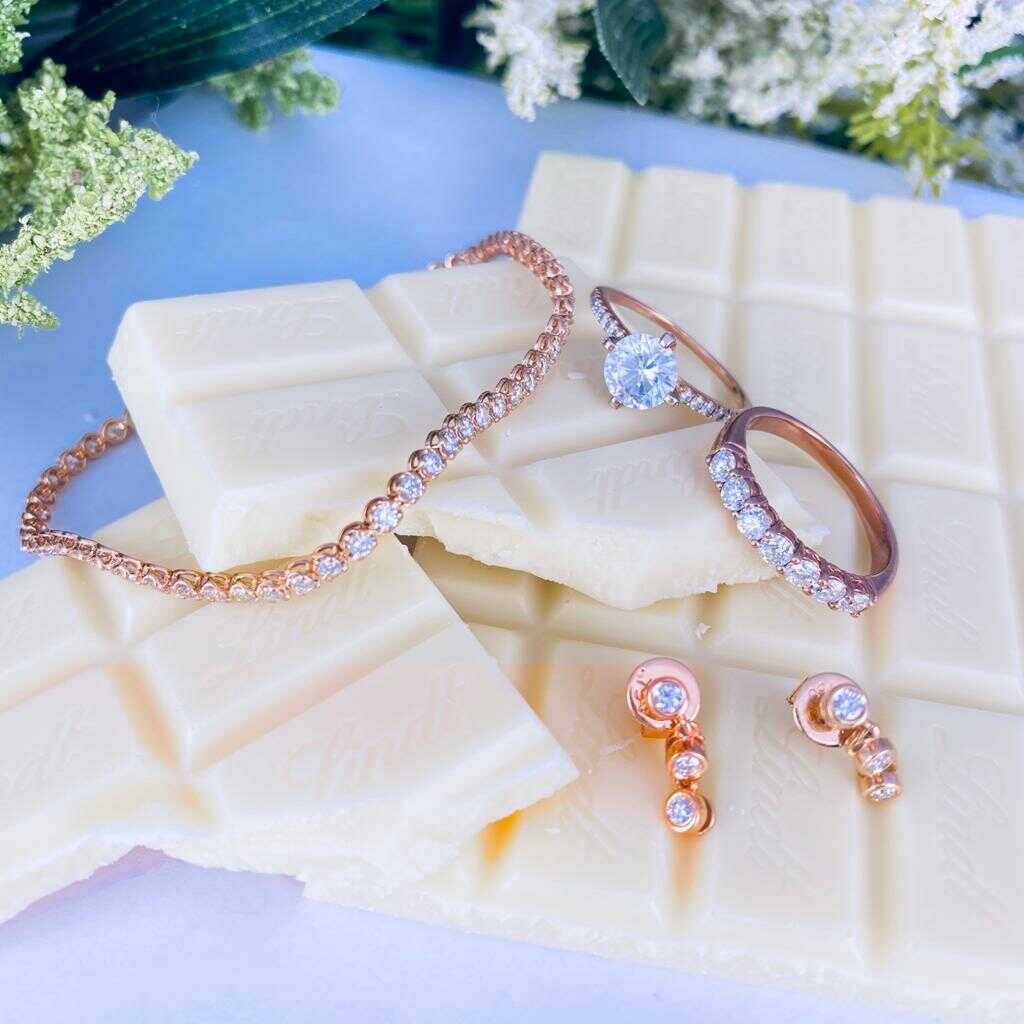Picking bespoke jewelry is both pleasant and hard, meaning that you need to make numerous choices along the way. Picking the top diamond for your engagement ring is not enough — you should also decide the appropriate setting for this treasure. And once you enter a jewelry store with this request, you realize there’s a wide range of options to choose from: platinum, silver, white gold, rose gold, yellow gold... Even if you’ve selected a particular metal among them, the next question arises: should you go for 14K gold and 18K gold? What to choose in the end to get an appealing yet high-quality setting for your diamond?
In this overview, Diamond Registry will share their experience in creating custom-made varieties of classic diamond engagement rings and other diamond jewelry types. With our help, you can pick the best metals for your valuable pieces and create an engagement ring with true value-for-money.

At a glance, recognizing the divergence between 14K and 18K is hard. If you put these two diamond engagement rings side by side, you won’t notice any differences in their appearance. But they exist — and the extent of variation becomes even more striking once you put a piece of pure gold near each engagement ring.
For jewelry purposes, it’s common to use an alloy of pure gold with other metals. It’s needed to change the color of the metal and bring it more durability. And here, the karat system (don’t mistake it with the carat weight of a diamond!) signalizes how much of pure gold is left in the alloy. For any karat option, the sum should be 24, as the pure gold has 24K. In this system, 18K gold means that it has 18 parts of pure gold and 6 parts of other metals. In the case of 14K gold, the fraction of other metals is already 10 parts, while pure gold already has slightly less than 60% of the chemical composition.
Depending on the chemical composition, 18K and 14K can stand for yellow gold, white gold, and rose gold. The metals you can mix pure gold with are copper, zinc, and nickel, among others. Together, they create a classic gold appearance as we know it.
In a diamond engagement ring, the karat number of yellow gold featured in the setting plays the difference. Even though the otherness can hardly be seen in your eyes, the quality of 14K gold and 18K gold is not equal. And the reason for that lies in their characteristics, durability, and general visual aesthetics.
The best thing about 14K gold is its affordability. Compared to 18K gold, it has a lower pure gold content, which is the most expensive metal in the alloy. Moreover, this karat number reveals a slightly brighter tone when it comes to the yellow gold than 18K. Since the 24K pure gold has an intense orange color, the greater portion of other metals softens its appearance more.
Another great advantage of 14K gold is its greater durability. Since pure gold by itself is very soft, the greater inclusion of other metals makes it much more solid — even compared to 18K of the same yellow gold.
In its turn, 18K gold looks more like yellow gold, thanks to the greater presence of pure gold in its chemical composition. Due to the same reason, it creates a more vibrant tone in rose gold too. Moreover, with this karat number, your engagement ring is unlikely to cause a nickel allergy. That’s because the greater presence of pure gold makes this alloy more skin-friendly.
In short, the answer to the question of this paragraph depends on the meaning you put in the word “quality.” If you understand it as a luxurious appearance and a greater pure gold presence, 18K gold is better. But if quality for you equals durability and value-for-money, 14K gold will satisfy your demands more accurately.
Commonly, both 14K gold and 18K gold are widely used in engagement ring settings, thanks to their toughness and appearance. At the same time, 14K is known for a bit more attractive price and better suitability. The latter aspect is a strong reason to buy such a diamond engagement ring for people leading an active lifestyle. Moreover, this karat category's greater affordability increases the like ability to buy such a yellow gold setting for the overwhelming majority of engagement rings. In its turn, 18K gold can be a great option for a person with sensitive skin who is not going to wear this piece of diamond jewelry too often.
If you want to make a wise decision for your engagement ring, you should understand the metals’ specifics in the jewelry setting. If you do a lot of homework or are into sports, choosing 18K is not practical. Even though this engagement ring looks better at the beginning, your active lifestyle will inevitably put this fragile piece of jewelry at high risk.
For the owners of sensitive skin, investing a bit more in 18K is valid. This metal type will protect you from nickel allergy.
In your buying decision, the jewelry appearance should also play a difference. 18K will bring a deeper hue to yellow gold, while 14K makes the color of white gold brighter and the tone of rose gold pinker. Consider all these nuances while making a final buying decision about your engagement ring’s visual aesthetics.

If you're struggling with numerous options and cannot decide which metal or diamond to choose, feel free to contact Diamond Registry! Since 1961, we have worked hard to protect our customers from overpriced diamonds. In particular, we give unbiased information about diamonds and help couples buy these jewels at wholesale prices. With us, you save money on a diamond engagement ring by investing in bespoke fine jewelry. Diamond Registry experts are committed to providing our clients with the most competitive prices in the industry while also maintaining the highest quality standards. Contact us through the form below!
Here is the list of top metals our clients pick for their diamond jewelry pieces. Feel free to use this rating for your inspiration!
Platinum is the most expensive setting for an engagement ring — but it’s truly worth it. The remarkable traits of this metal are outstanding glow and hypnotizing white color. Also, it’s very caring to your skin: platinum doesn’t cause allergies and looks great on pale and dark skin alike. Match it with a D-color diamond to create a truly royal piece of jewelry!
This metal looks like platinum and even has similar characteristics — but it’s much more affordable. In fact, white gold is not a bar of pure gold but a mix of nickel and palladium, plated with rhodium to create a white color. For the owners of sensitive skin, please ask for the presence of palladium protection in the alloy before buying. And remember: white gold intensifies a yellowish tone in diamond, so match this metal with D-I color jewels only.
This is the most popular pick for an engagement ring setting which creates a nice contrast once combined with a diamond. In particular, yellow gold appearance depends on the karat number chosen significantly: 18K looks much better than 14K in this gold color category. Moreover, this metal is known for great longevity — but needs proper care with regular cleaning in lukewarm soapy water. If you need to mask a yellowish color of a diamond, yellow gold is a great choice.
This metal is a good-looking alternative to yellow gold that steadily reaches popularity. Its soft color makes a nice pair with a diamond, especially on a tender girl’s finger. The alloy features copper, while 18K and 14K grades determine the intensity of red tint in this metal.
Rose gold is a great low-budget option: it’s cheap at the start, doesn’t require extra attention, can easily mask a diamond’s imperfections in terms of low color grades, and suits all skin types. Nevertheless, pay attention to possible allergic reactions and don’t let such a ring interact with chemicals.
If your engagement jewelry will not feature a diamond, silver is the best choice. In the alloy for a ring, it features pure silver next to copper. This metal is affordable — however, it looks cheap next to a precious stone. Moreover, it’s not as durable as other metal settings, being prone to scratches and losing its color in a short time. If you’re ready to pay less but keep your jewelry under a steady watch, silver can work well for you.
No matter which metal and setting you’ve chosen, Diamond Registry can create custom-made jewelry for you. We work with all the materials, diamond sizes, and designs of any complexity. Ask us for some diamond advice right now!

